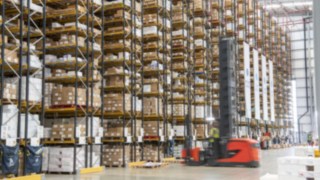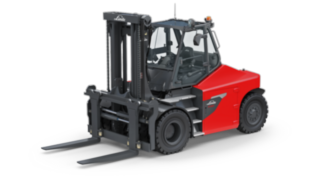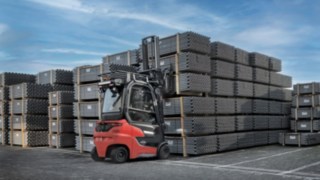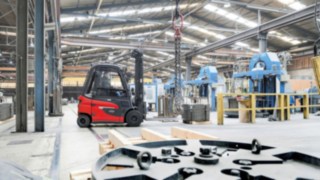
Linde Material Handling recently hosted a webinar entitled ‘Warehousing 2.0 - Putting the AI into Intralogistics’. Amongst the panellists for this session were Ian Abbot, Director of Solution Development for UK/IRE and Nordics at KION Group; Vincent Harant, an IT consultant on digitalisation and automation for KION Group; and Aleksandar Krnjaic, a Senior Research Engineer for Dematic.
In this Q&A-style blog, they help companies put their best foot forward as they step towards AI implementation by giving their perspectives on some of the most burning questions and key considerations around Artificial Intelligence in the intralogistics sector.
What is true Artificial Intelligence?
The view of Ian Abbott:
In the automation and logistics industry, there is a common misconception that complex algorithms are the same as AI. It's important to clarify that true AI is defined by its capacity to learn and adapt without human intervention - simply having a sophisticated set of formulas and algorithms within a warehouse management system is not the same.
While there has been significant interest and progress in the implementation of AI in the sector, there is still a long way to go in fully embracing and deploying true AI technologies. Understanding and recognising the difference between complex automation and genuine AI is crucial as we move forward in this rapidly evolving field.
How will budget constraints limit my ability to capitalise on AI?
The view of Vincent Harant:
It's reasonable to assume that financial limitations could be a barrier to accessing and benefiting from Artificial Intelligence, potentially giving larger companies with bigger budgets an unfair advantage in implementing and deploying this rapidly evolving technology. However, given the fast-paced nature of development, it's expected that AI will become increasingly affordable over time, making budget less of a decisive factor.
In reality, a company's interest and willingness to embrace AI is what truly matters. Smaller companies, with their ability to make quicker decisions, are uniquely positioned to capitalise on the AI revolution. By being agile and proactive, they have the potential to become early adopters and emerge as significant players in this space, turning what might seem like a disadvantage into a powerful opportunity.
How can AI help intralogistics operators interpret market forces?
The view of Ian Abbott:
One of the most transformative capabilities of Artificial Intelligence, in the context of intralogistics, is that it can enable us to look beyond the figurative four walls of an operation, allowing us to tap into a much broader pool of external data - ranging from socioeconomic trends to political developments - and prepare for things that a manual planner simply wouldn’t have visibility of.
For instance, AI can analyse forecast data to identify an unexpected spell of good weather. The AI system could then anticipate a surge in demand for seasonal products, such as barbeques, and recommend adjustments in inventory levels and distribution strategies accordingly.
This proactive approach not only drives operational efficiency but also creates a competitive edge by allowing companies to be more proactive and better prepared for the ever-changing landscape of global commerce, where external factors can have a significant impact on supply chain dynamics.
What will be the impact of AI on the human workforce?
The view of Aleksandar Krnjaic:
When discussing Artificial Intelligence, there’s often a fear that this emerging technology will lead to widespread job displacement. While AI will undoubtedly have a significant impact on the workforce, I predict it will mirror the transformative effects of past innovations, such as the introduction of computers and the internet.
AI, in my view, should be seen as a force multiplier—one that enhances human efficiency and effectiveness rather than replacing humans. As my co-author Ian Abbott said during Linde’s latest webinar, there are examples where AI is freeing up workers to engage more deeply with the overall complexities of their jobs and allowing them to take on more ‘investigative roles’ where they can be proactive and problem-solving, rather than reactive and passive.
He also talks about the opportunity to use AI to expand the skill sets of workers at any stage of their careers – whether they are young people taking their first steps into the sector, or seasoned operators who have decades of experience in the intralogistics environment. Rather than fearing job loss, we should focus on how AI can augment human capabilities, enabling workers to evolve and thrive in increasingly complex and tech-driven environments.
What is needed to ensure AI is effective as possible?
The view of Ian Abbott:
Artificial Intelligence presents some major opportunities for the intralogistics sector, including in key areas such as sustainability and operational efficiency. That said, for AI to achieve its full potential we need to ensure it is being properly fuelled.
But what does that mean exactly? Put simply, AI thrives on data. The more data it receives, the more extensive its knowledge base becomes, enhancing its ability to anticipate trends and make complex, informed decisions.
A great example of this is with risk mitigation. If an AI system was given access to hours upon hours of video footage gathered through a comprehensive network of cameras, it could effectively identify unhealthy trends or high-risk junctions in a warehouse.
Similarly, if AI was given access to data from temperature and vibration sensors, it could be used to anticipate potential failings in vehicles – a practice called predictive maintenance. This not only prevents costly downtime but also enhances safety by addressing issues before they become critical.
Looking back at the industry a decade ago, the lack of available data significantly hampered our ability to manage operations intelligently. Decisions that appeared sound often had unintended negative consequences because they were made without a full understanding of upstream and downstream factors - I refer to this as the butterfly effect.
To harness the full potential of AI, businesses need to move towards collecting data from every possible source and ensuring it’s accessible to AI systems in real-time. To support this, they should also make the transition from on-premises servers to cloud-computing.
How could we see AI evolve in the future?
The view of Aleksandar Krnjaic:
As someone closely involved in cutting-edge research, I've observed that several key areas are rapidly embracing Artificial Intelligence. One of the most notable is AI-based machine vision, which enables systems to extract a deep understanding of their environment using cameras, much like how humans perceive the world around them. We’re already witnessing AI leveraging this visual information to make high-level decisions, such as instructing autonomous vehicles in warehouses to slow down when potential collisions are detected.
AI is also being deployed to optimise large-scale warehouse processes, significantly enhancing activities like order picking and replenishment. This capability is transforming the efficiency and accuracy of operations, setting new benchmarks for throughput and productivity.
Looking ahead, AI will pave the way for greater flexibility in the use of robots within warehouses, particularly for tasks that require a high level of flexibility and dexterity traditionally handled by humans, such as picking, packing, wrapping, or handling complex objects like fabrics. . Given the ongoing challenges warehouse managers face in securing reliable labour, the adoption of these AI-driven capabilities is poised to be a major trend in the industry’s future.
One of the key challenges warehouse managers face today is access to labour, so the utilisation of these capabilities will be a huge trend we see in the future.
Conclusion: Put yourself on the best footing for AI implementation
Companies that take proactive steps now to integrate AI into their operations will be well-positioned to lead in the future and as AI continues to evolve, staying informed and adaptable will be key to harnessing its full potential. For those ready to explore AI further, the insights shared in Linde Material Handling’s latest webinar offer a valuable resource: Warehousing 2.0 – putting AI into IntraLogistics (wbmwebinars.com)












